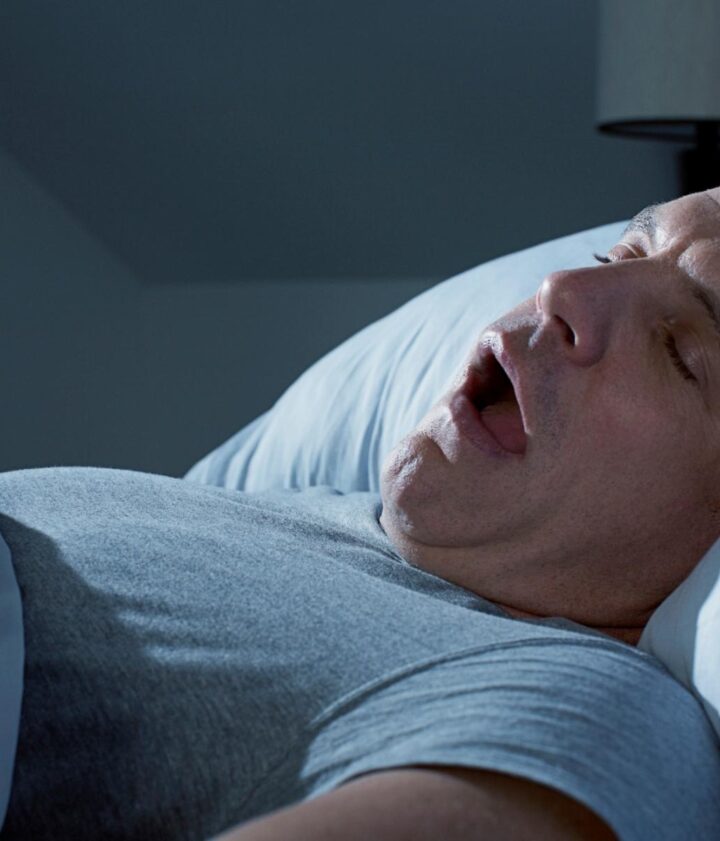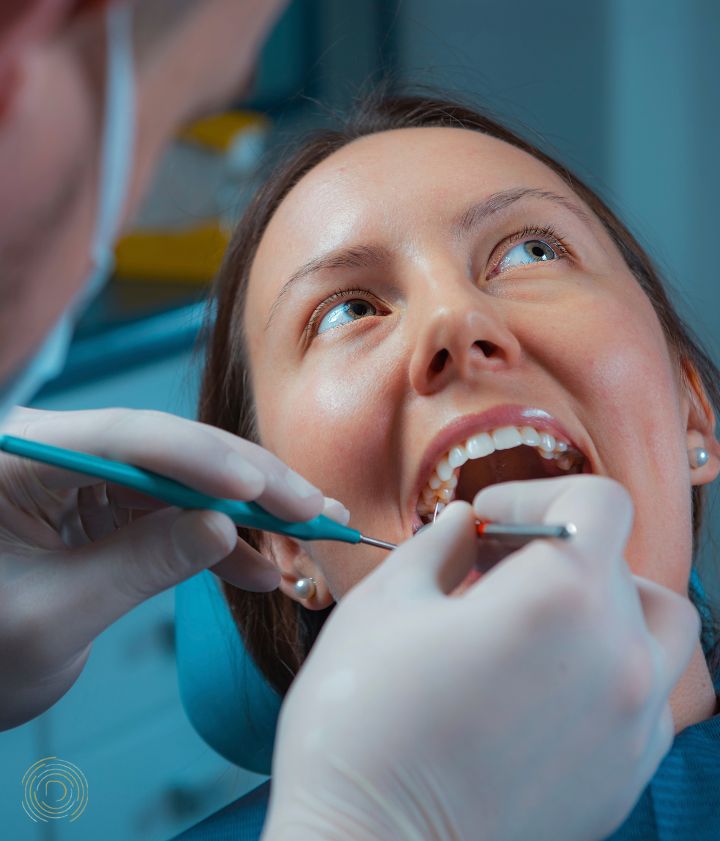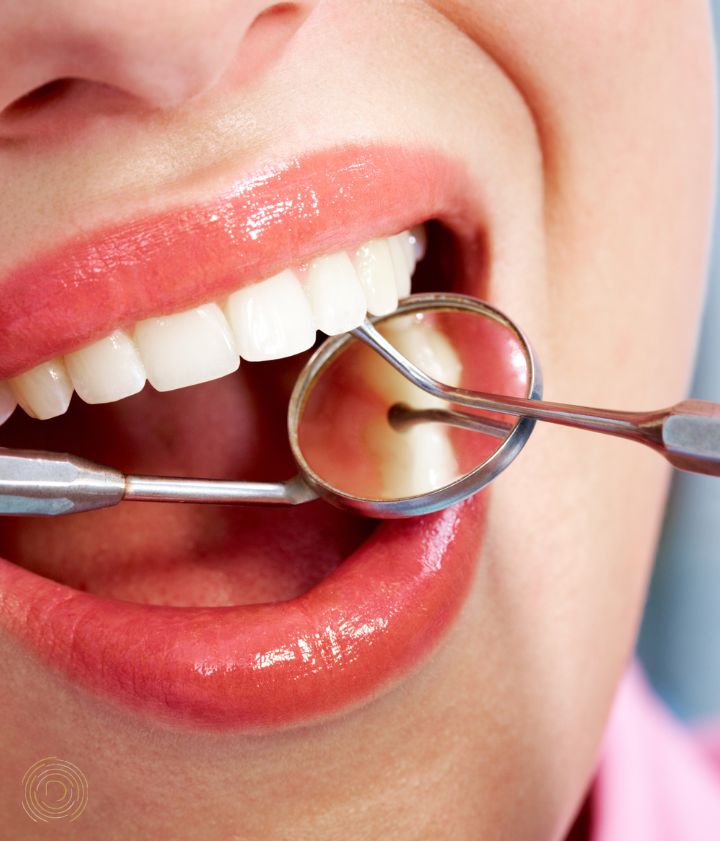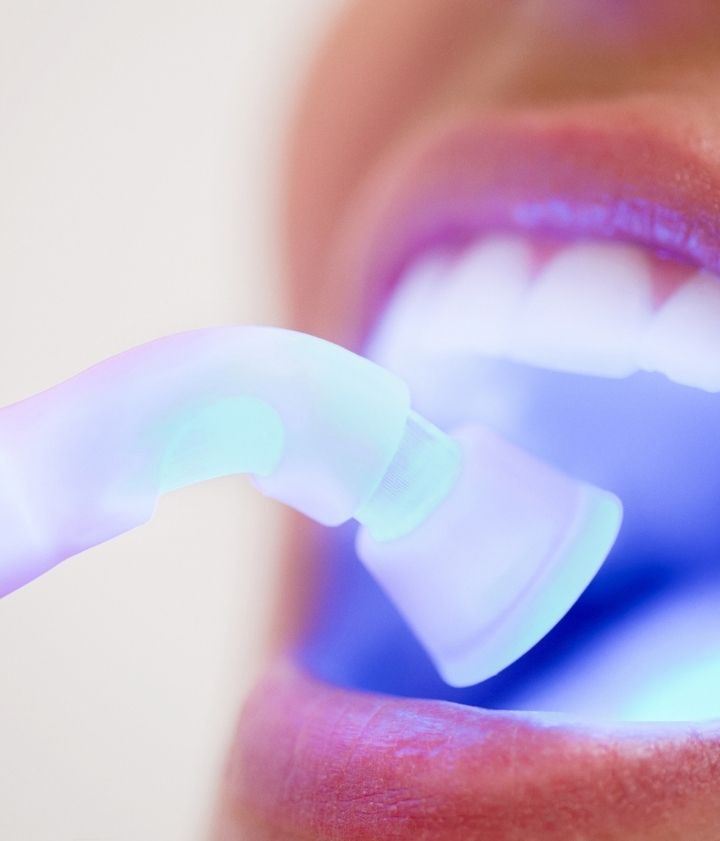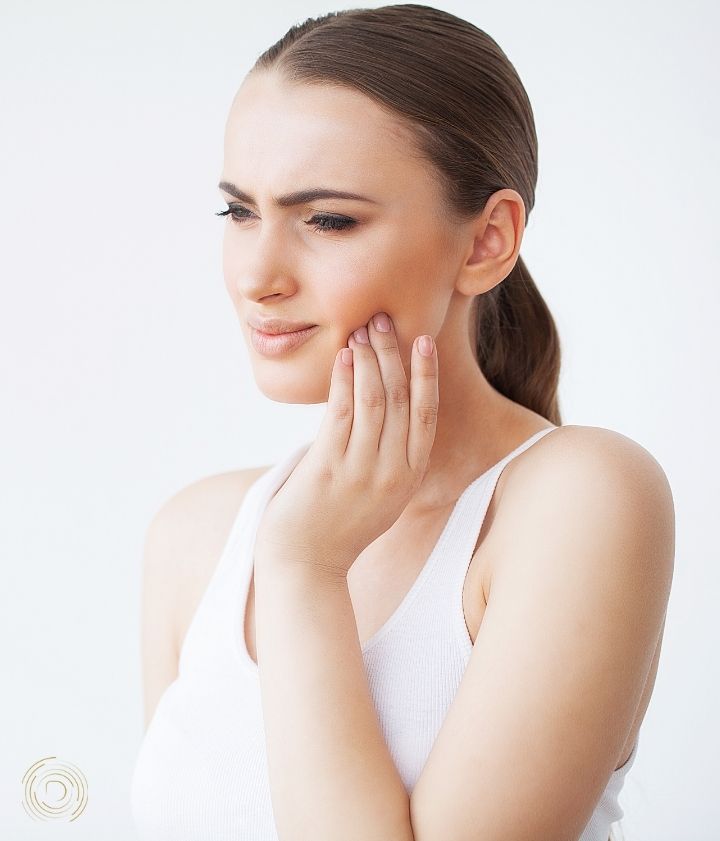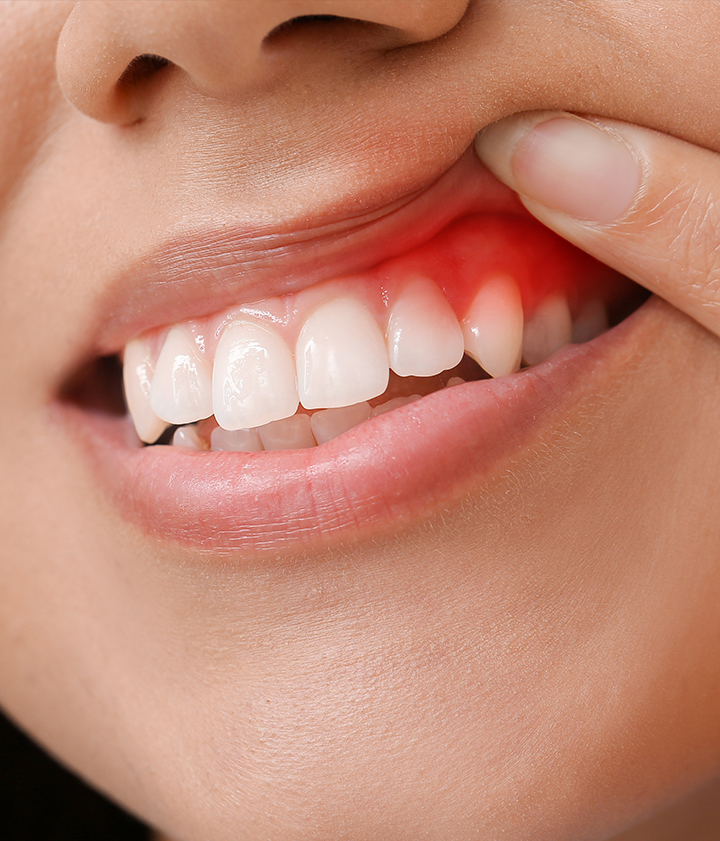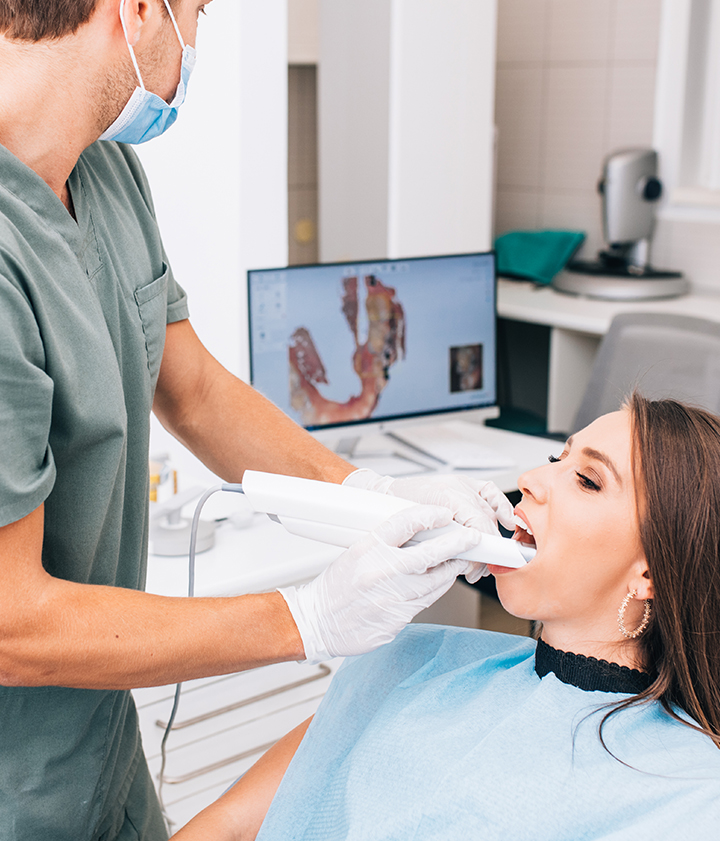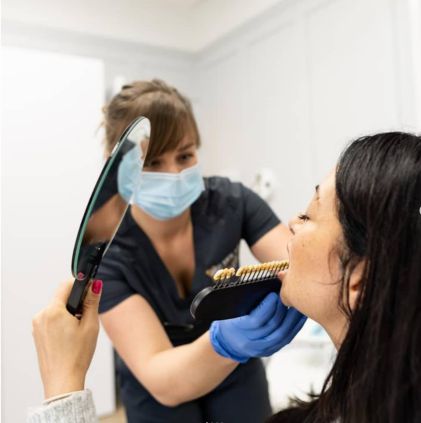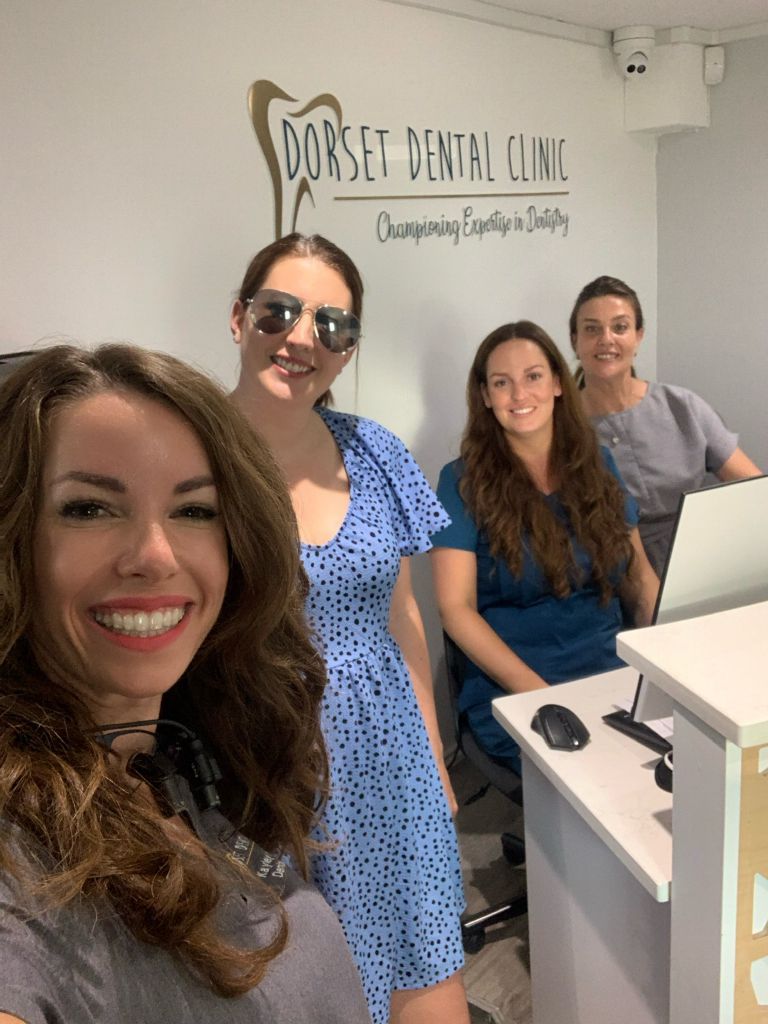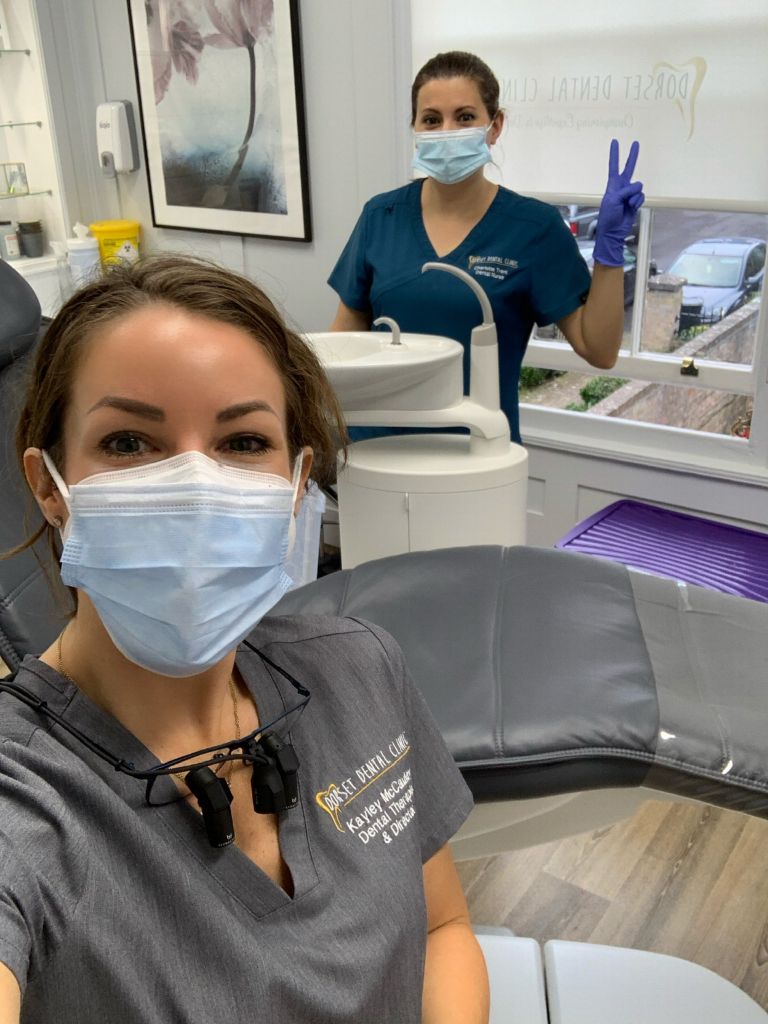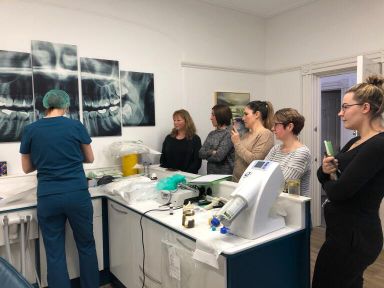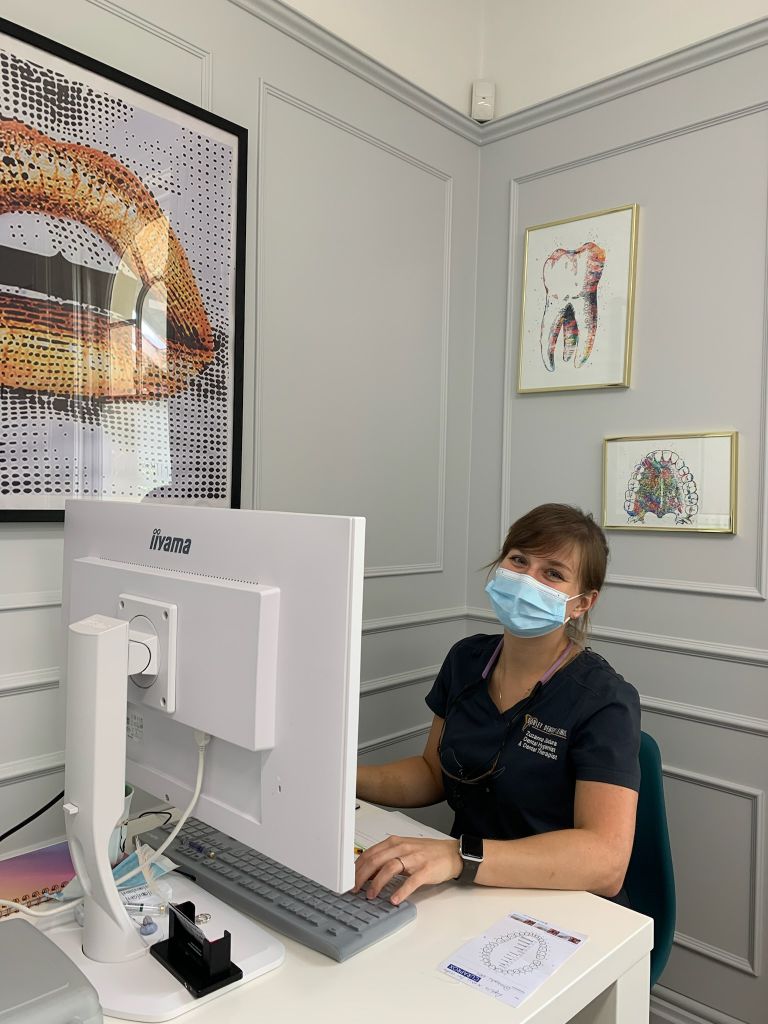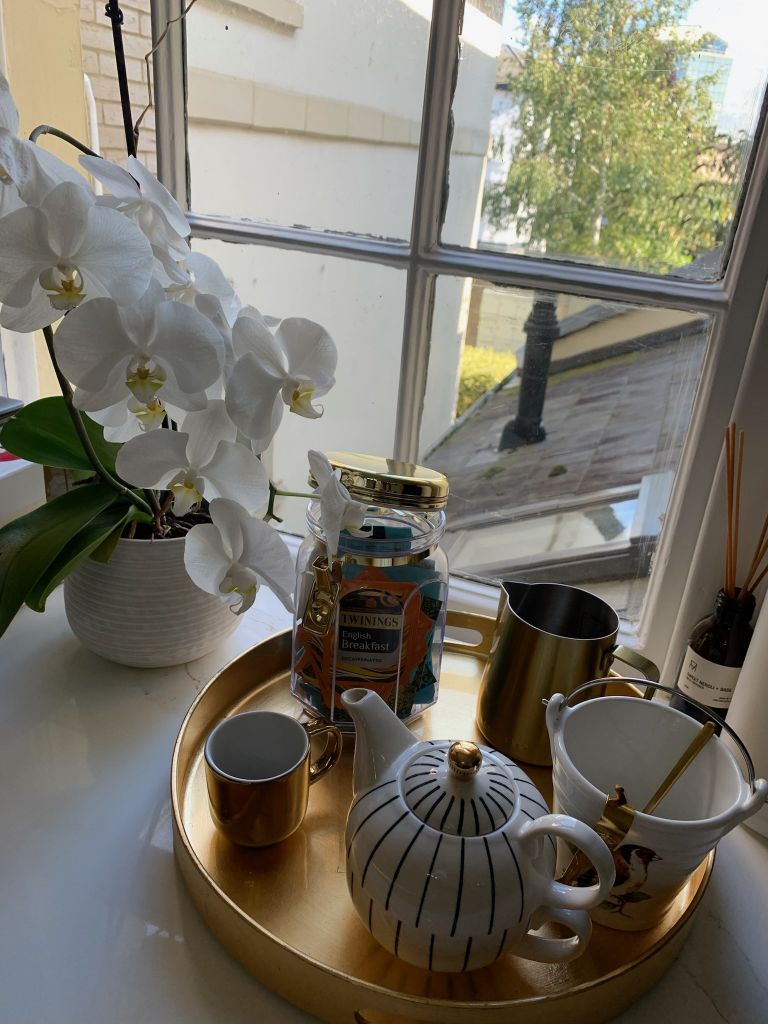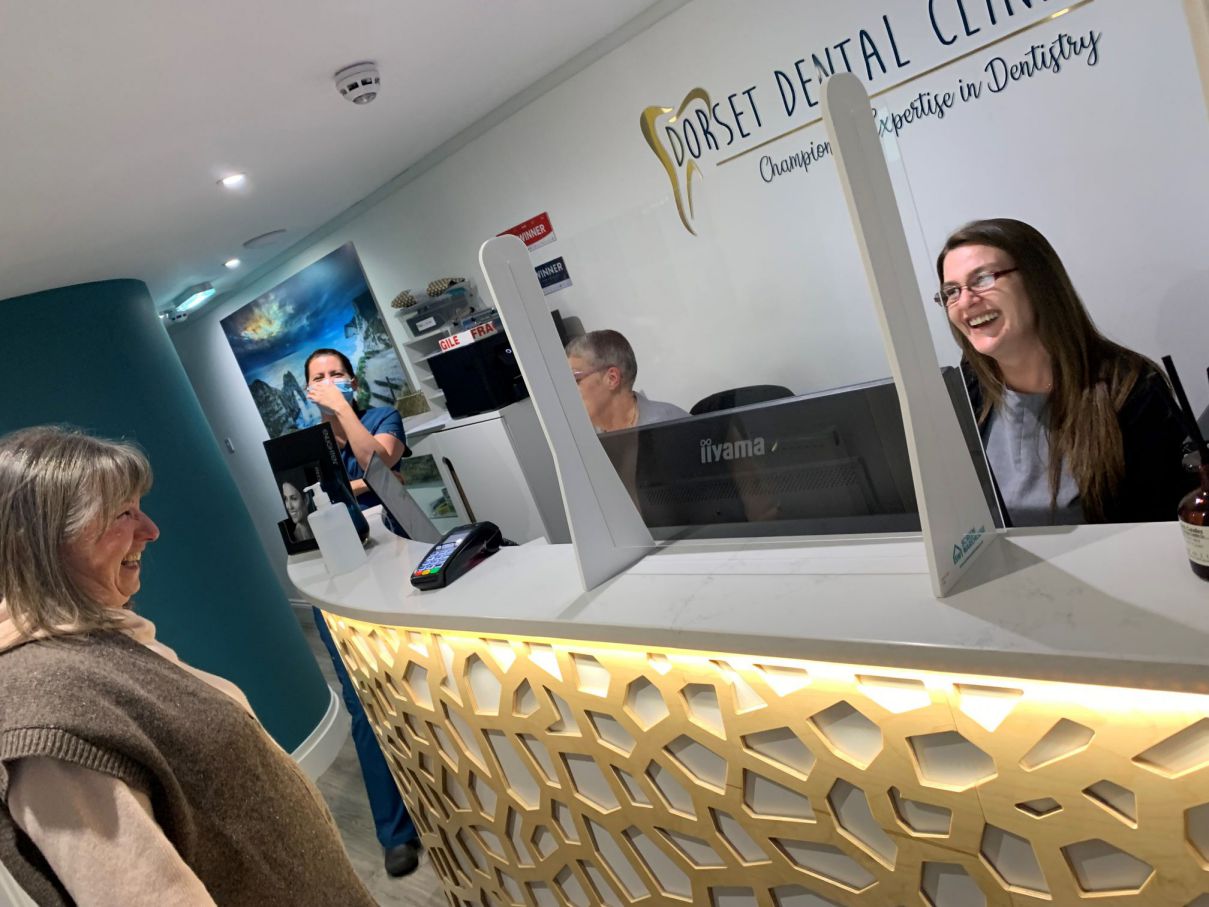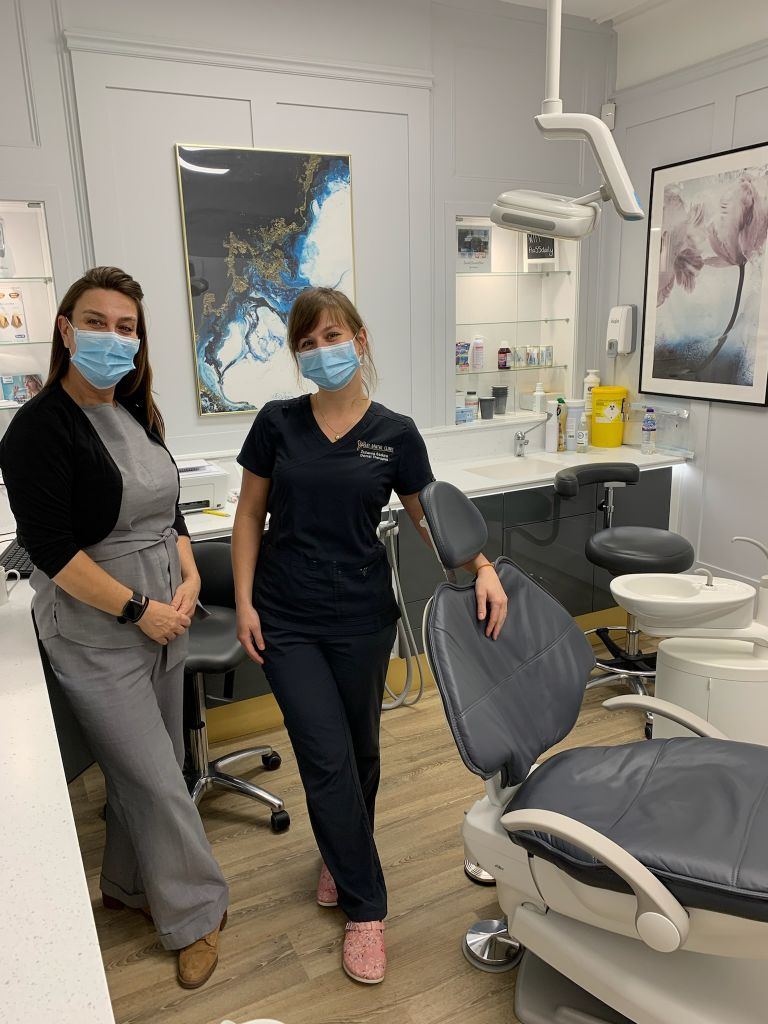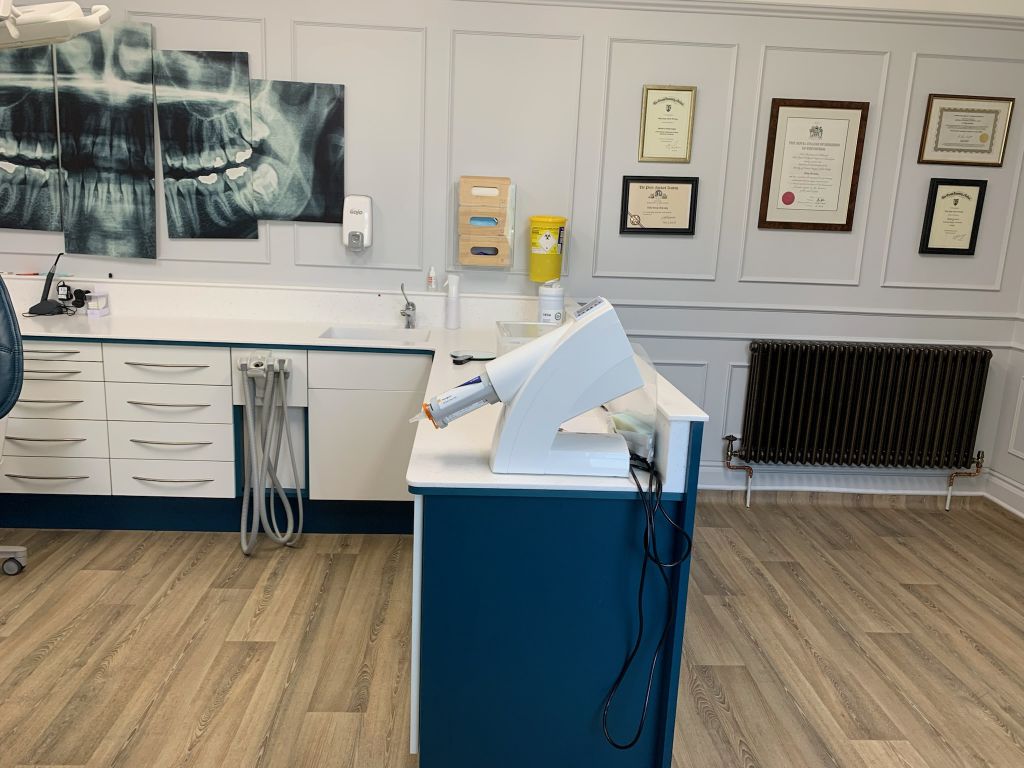What is Tooth Whitening?
Teeth whitening, also known as teeth bleaching, is a simple, safe and effective method to creating a whiter and brighter smile. Research suggests that brightening your smile can make you look healthier, as well as younger and more attractive. There are many different methods available for teeth whitening, such as chemical whitening and abrasive brightening. At the Dorset Dental Clinic, where possible, we want to use the most highly effective and non–intrusive methods to achieve desired results.
What to expect…
Teeth whitening is an effective method of eliminating or reducing discolouration of teeth by removing yellow and or brown extrinsic stains. Teeth can be brightened in 4 or 5 shades alone in the first treatment and, overall, more than seven shades whiter with ongoing treatment. You and your dentist, using a shade chart, can decide the best and most appropriate shade to suit your smile.
Teeth whitening is not a permanent process. Although it will last longer depending on lifestyle, whitening usually lasts one to two years. After a teeth whitening treatment, teeth may have an increase in sensitivity for one or two days. However, this will not have any lasting effect or damage to teeth.
Root Canal Treatment and Teeth Whitening
Root canal treatment may become a necessity in preventing further infection, decay, discolouration or tooth loss. Tooth whitening, such as Zoom whitening, is an external agent used to whiten teeth. If a tooth or set of teeth becomes darkened following a root canal treatment, the dentist may be able to apply a bleaching agent internally within the tooth. This process is called non-vital whitening, which is where the tooth’s pulp chamber is thoroughly cleaned, disinfected and filled with a bleach–soaked cotton ball. This remains within the teeth pulp chamber, usually changed once a week. Over time, the affected tooth or teeth will whiten from the inside out.
Professional Teeth Whitening vs over-the-counter Home Whitening
Oral health professionals advise that professional teeth whitening will give you the most effective results in brightening your smile compared to over-the-counter home whitening solutions.
Unlike home treatments, receiving treatment from a cosmetic dental professional will enable you to ensure your overall oral health, as well as check for any underlying issues leading to tooth discolouration.
Receiving ‘in–house’ treatment is custom to you, which means all aspects of the procedure are to complement your desired results. With professional teeth whitening, patients can obtain the desired results in just one treatment, as well as advice on oral hygiene practices to maintain that smile.
Some over-the-counter or home-bleaching products can achieve the desired results. It is advised to use products which are less abrasive, as they are safer, although they will prolong treatment. It should be noted that not all over–the–counter treatments are safe, which can cause damage to teeth, especially without all-around care for your dental health. Home bleaching products can lead to damage to teeth as well as gum and soft–tissue irritation. It is advisable to inform your dentist of any over-the-counter products you wish to use.
FAQs
What causes stained teeth?
There are many contributing factors which can cause stains on teeth. Discolouration of teeth usually begins in your late 20s and early 30s, as the outer layer of the teeth, also known as tooth enamel, starts to become thinner with age. Unfortunately, discolouration can also be hereditary, meaning due to genetics, you can be prone to early yellowing or discolouration of the teeth.
The biggest contributing factor to teeth staining is lifestyle; your diet has a large impact on your teeth. Tea, coffee, red wine, citrus and acidic foods can lead to teeth becoming stained.
Chemical damage such as medicines or tobacco also discolours teeth. These are usually called extrinsic stains, and this is where the enamel of the tooth becomes marked. Many extrinsic-type stains are reversible and can completely disappear using teeth whitening treatments.
Is it possible to remove all stains? Intrinsic and extrinsic stains
Teeth whitening procedures are highly effective in removing different kinds of stains. Although they may not completely eliminate some stains, it should be noted that the darker the stain, i.e. brown or black, the tougher it will be to remove. There are two different types of stains which can cause discolouration to the teeth. These are intrinsic and extrinsic stains.
Extrinsic stains are the discolouration of the outer layer of the teeth; these stains are superficial, meaning that they can be removed from teeth whitening, bleaching and or polishing.
In some cases, the tooth’s inner structure becomes discoloured, giving teeth a yellow or grey hue. The difference between extrinsic and intrinsic stains is that intrinsic stains are deep within the tooth’s structure. Therefore, stains cannot be easily removed. Depending on the severity of the condition, some intrinsic stains can never be removed by means of bleaching or whitening. There are other treatments or procedures available for intrinsic stains, such as porcelain veneers. See our porcelain veneers page at the Dorset Dental Clinic.
Intrinsic stains can be caused by different conditions and traumas to the teeth. An example of this is the use of tetracycline, an antibiotic. This medication, taken by children at a young age during teeth development, can cause intrinsic stains which cannot be removed through teeth whitening. Trauma to teeth, causing blood vessel or nerve damage, can also cause intrinsic stains, root canal treatment may be advisable here as to prevent further staining to the teeth.
Fluorosis?
Fluoride is found in many foods and all drinking water and is an active ingredient in many toothpastes. This mineral has been clinically proven to strengthen tooth enamel which helps build resilience against tooth decay. Overexposure to fluoride during early teeth development, however, can cause a dental condition called fluorosis. Fluorosis can be mild or severe, depending on the level of exposure. Mild fluorosis can lead to white lines, spots or streaks appearing on teeth. Teeth whitening can brighten your smile, making the appearance of these marks less noticeable. In more severe cases, affected teeth may become pitted and develop grey, black or brown spots. In these cases, teeth whitening can not treat those affected teeth.
Intrinsic stains can be caused by different conditions and traumas to the teeth. An example of this is the use of tetracycline, an antibiotic. This medication, taken by children at a young age during teeth development, can cause intrinsic stains which cannot be removed through teeth whitening. Trauma to teeth, causing blood vessel or nerve damage, can also cause intrinsic stains, root canal treatment may be advisable here as to prevent further staining to the teeth.
